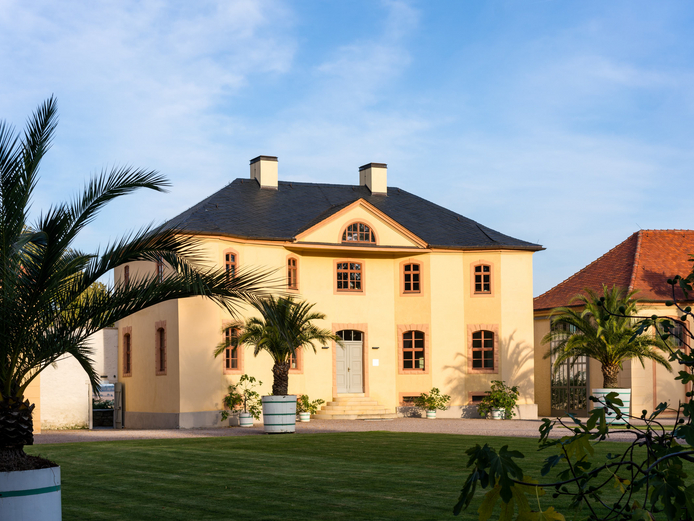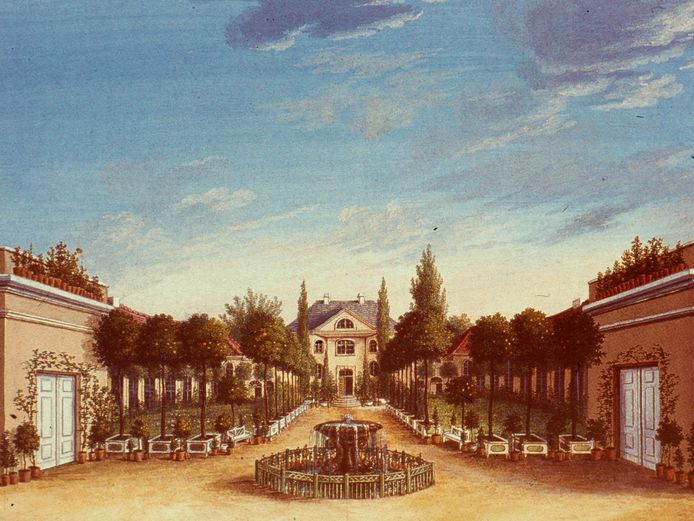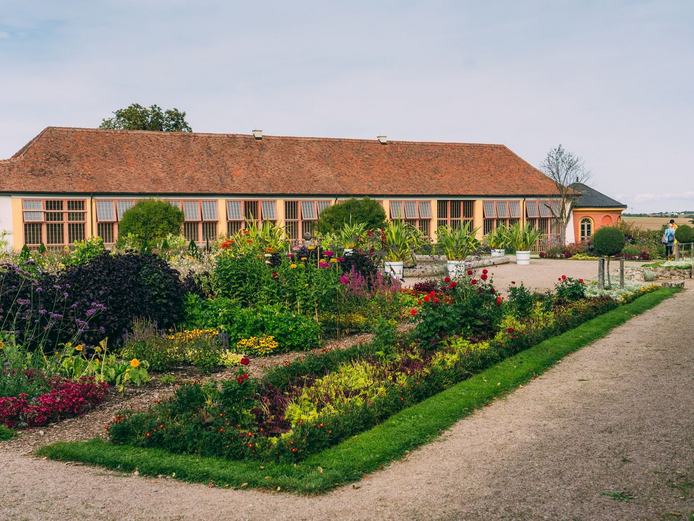Projects of the Klassik Stiftung Weimar are funded by the European Regional Development Fund (ERDF) and the Free State of Thuringia, represented by the State Chancellery of Thuringia, Department of Culture and the Arts.


During its most productive phase, the Belvedere orangery was home to hundreds of Seville orange trees. Pomegranates, figs and coffee trees were also cultivated there. The builder of the castle, Duke Ernst August, spent exorbitant amounts of money on exotic plants and even constructed an orangery which, at that time, symbolised the importance and wealth of his Baroque court.
The ensemble as it exists today was completed in the mid-18th century. The complex includes the gardener’s house, the orangery wing, the adjoining New and Long House behind it, and the Red Tower. Thanks to Duke Carl August’s and Goethe’s shared passion for botany, some of the most recently discovered exotic plant specimens from around the world found their way into the plant collection. Belvedere was especially famous for its collection of so-called “Cape plants” and “New Hollands”, i.e. plants from South Africa and Australia. Some 7,900 species and varieties of plants were listed in the plant collection catalogue “Hortus Belvedereanus” of 1820.
In the Long House, changing presentations of the important plant collection take place in winter and spring. In the Gardener's House there is a small exhibition on garden culture in Belvedere.
The gardener’s cottage, situated between the two wings of the Orangery, was built in 1736/37. Thanks to its recessed facade, the cottage represents an elegant addition to the horseshoe-shaped ensemble. The building marks the endpoint of the former Baroque transverse axis leading to Belvedere Castle.


For many years, the gardener’s cottage served as the living and working quarters of the court gardener. Today it houses the exhibition “Guardians of the Golden Apples” which presents the landscaping achievements of the gardener families and the plants they cultivated in Weimar.
Opening Times:
2 March - 1 November: Tue-Sun | 10am-6pm
Admission is free!
The Long House, located at the south-east corner of the Baroque Orangery, was built during the reign of Anna Amalia in 1760. Originally detached from the rest of the ensemble, it was used to cultivate bitter oranges, and later coffee plants and damson plum seedlings. During the course of the 19th century, the Long House was refurbished as a representative showcase for Duke Carl August’s growing botanical collection. His Cape and New Holland specimens, i.e. exotic plants from South Africa and Australia, were particularly noteworthy. The Red Tower was built at the eastern end of the Long House in 1820. The duke installed his botanical library in the tower and decorated it with Adam Friedrich Oeser’s chinoiserie murals which had previously adorned Anna Amalia’s tea pavilion since 1775.
The plant exhibition in the Long House is open to visitors in the winter months.


The horseshoe-shaped Orangery and its abutting pavilions were built by Duke Ernst August of Saxony and Weimar (1688 – 1748) between 1739 and 1755. Ever since then, the Orangery has been used to store bitter oranges, myrtles, agaves and other exotic plants during the winter months.
One of its unique features is the historic heating duct, fuelled by firewood gathered from the park which keeps the Orangery at a constant temperature of 3 – 8 °C in the winter. This heating system was installed in 1820 to replace the original cast-iron furnaces and remains in operation to this day. During the summer, the north wing is used for special exhibitions.

